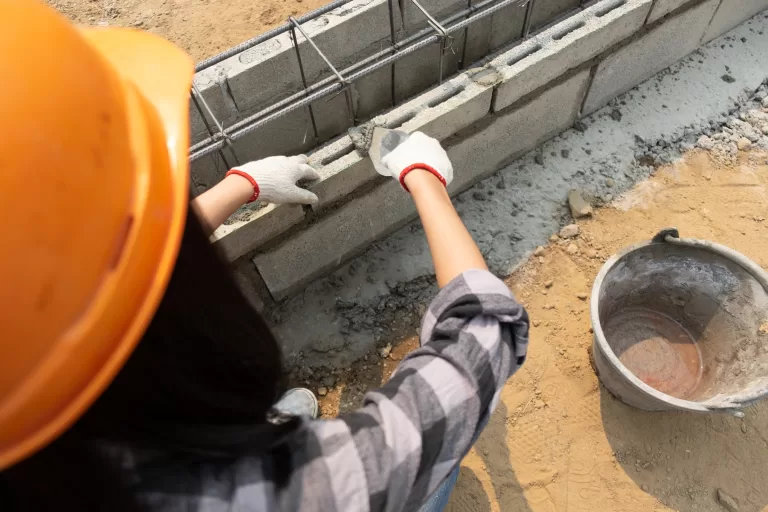The foundation is one of the most critical components of any structure. It transfers the total loads from the structure to the soil and provides stability to the entire construction. Foundations can be primarily classified into two main types: shallow foundations and deep foundations. These classifications are based on the depth at which the foundation is provided. Let’s explore the features that differentiate these two foundation types
Shallow Foundation
Definition
Shallow foundations are those that are placed near the surface of the earth or at a shallow depth below ground level. They are generally used when the surface soils are strong enough to support the imposed loads of the structure.
Depth
Typically, shallow foundations are placed at depths less than or equal to the width of the foundation.
Cost
Shallow foundations are generally less expensive compared to deep foundations. The construction process is simpler, requires less labour, and uses fewer materials.
Feasibility
These foundations are feasible in situations where the load-bearing capacity of the surface soil is sufficient to carry the load of the structure.
Mechanism of Load Transfer
In shallow foundations, the load is transferred to the soil at a relatively shallow depth through direct bearing.
Advantages
- Economical and cost-effective
- Easier and faster to construct
- Suitable for structures with light to moderate loads
Disadvantages
- Not suitable for deep, loose, or weak soil
- Limited to structures with relatively low load requirements
Types
Spread Footings:
The workhorse of foundations: Spread footings, including isolated, combined, and strip footings, are ideal for supporting individual columns or walls.
Adaptable and economical: Spread footings are a cost-effective solution for structures with good soil conditions and manageable loads
Targeted support: Each footing works independently, distributing the weight of a single element onto a wider area of soil.
Mat or Raft Foundations:
- A unified base for complex structures: A mat or raft foundation is a large, continuous slab of concrete that supports multiple columns and walls.
- Strength in numbers: This system is ideal for heavier structures, uneven soil conditions, or situations where multiple footings would be too close together.
- Uniform distribution: The entire mat spreads the load across a large area, ensuring stability even on challenging sites.
Deep Foundation
Definition
Deep foundations are used when the shallow soils cannot support the loads imposed by the structure. They transfer the load to deeper, more stable soil or rock layers.
Depth
Deep foundations are placed at depths greater than their width, often extending several tens of metres below ground level.
Cost
Deep foundations are more expensive due to the complexity of the construction process, the need for specialised equipment, and higher material usage
Feasibility
These foundations are feasible in situations where surface soils are weak or when the loads are heavy, requiring the load to be transferred to deeper strata.
Mechanism of Load Transfer
In deep foundations, the load is transferred through skin friction or end bearing to the deeper, more stable soil or rock layers.
Advantages
- Suitable for heavy structures and tall buildings
- Can bypass weak or unstable soil layers
- Provides greater stability and support.
Disadvantages
- Higher cost and more time-consuming
- Requires specialised equipment and expertise.
Types
Pile Foundations:
- Reaching for bedrock: Piles, including driven piles, drilled shafts, and helical piles, extend deep into the ground, transferring structural loads to stable layers.
- Adaptable solutions: The type of pile chosen depends on soil conditions and project requirements. Driven piles are ideal for dense soils, drilled shafts for weak soils, and helical piles for quick installation.
- Strength through depth: Piles bypass weak surface soils, providing a secure foundation for heavy structures or those built on challenging sites.
Pier Foundations:
- Columns of strength: Pier foundations are deep columns embedded deep into the ground, acting as sturdy support structures for bridges, elevated buildings, or other heavy loads.
- Transferring weight downwards: Similar to piles, piers transfer the structure’s weight to a stable soil layer below weaker surface soils
- Cost-effective depth: While not as deep as pile foundations, piers offer a more economical alternative for projects requiring moderate load-bearing capacity and predictable soil conditions.
Choosing between a shallow and a deep foundation depends on various factors, such as the type of structure, load requirements, soil conditions, and budget constraints. Shallow foundations are cost-effective and suitable for lighter structures on strong surface soils. Deep foundations, although more expensive, provide the necessary support for heavier structures and when surface soils are inadequate. Understanding these differences helps in making informed decisions in the construction process, ensuring the stability and longevity of the structure.
The Best Cement Solution with Topcem Cement
Whether you opt for a shallow or deep foundation, the quality of the cement used is paramount to ensuring the strength and durability of your structure. Topcem Cement promises to provide the best cement solutions for any kind of foundation. Known for its superior quality and reliability, Topcem Cement ensures that your foundations, whether shallow or deep, are built to last, providing the necessary support and stability for your construction projects. Contact us for all your cement needs!

